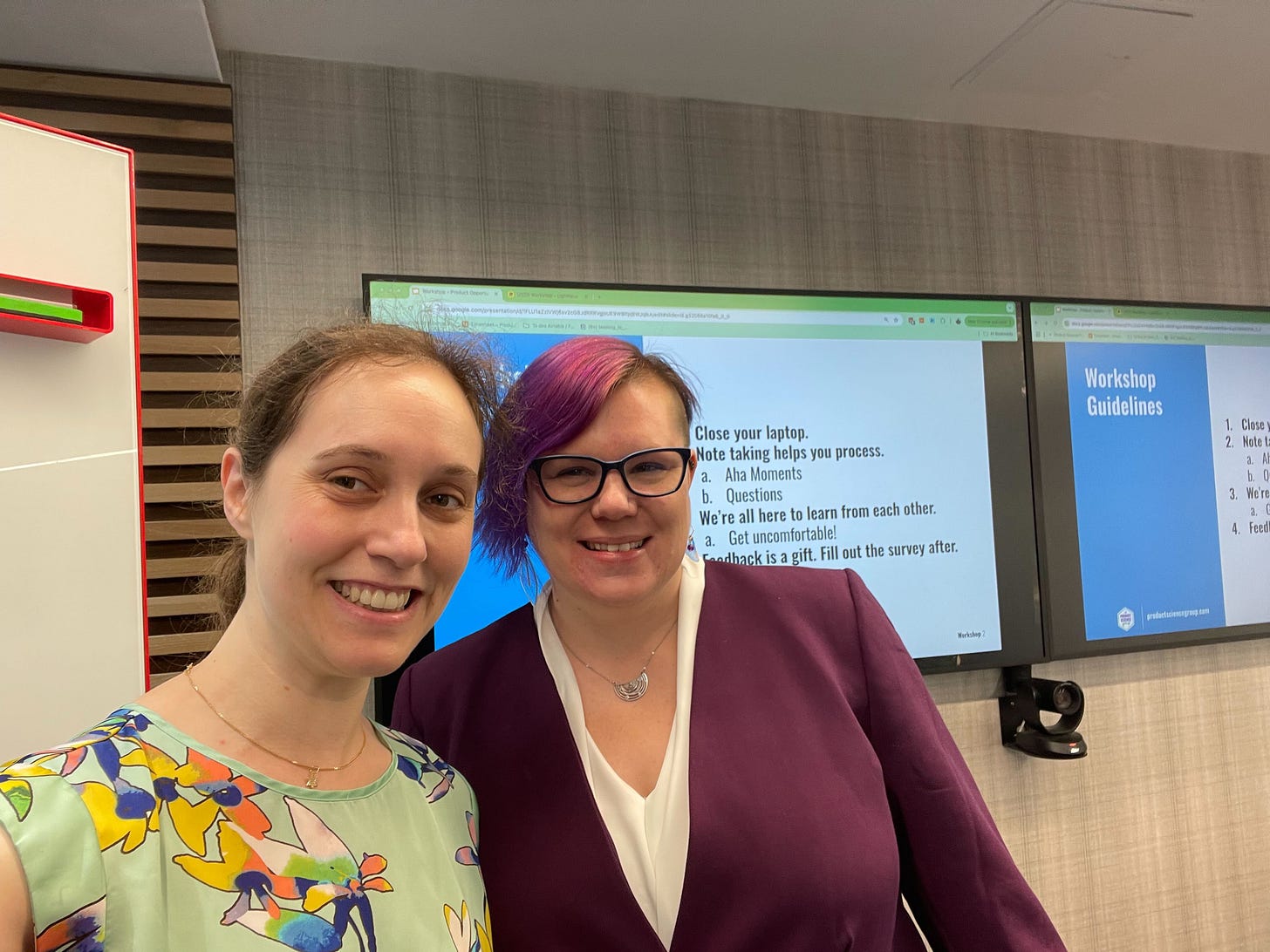The UMPF Framework: A Systematic Approach to Product Opportunity Assessment
The challenge with product decisions isn't a lack of ideas—it's determining which opportunities deserve investment.
The challenge with product decisions isn't a lack of ideas—it's determining which opportunities deserve investment. At yesterday’s UXDX workshop, Dina Levitan and I shared Product Science’s UMPF framework for analyzing which opportunities to pursue.
Here's some feedback we heard from participants:
"POA was an interesting concept that I haven’t heard about and am excited to take it back to my cross-functional team."
"I'm inspired by the stories of real impact made by research."
“What I found particularly helpful was the part that talks about opportunity assessments, this is something that teams rarely have visibility over and talking about it gives us the opportunity to take a more proactive position about allocation of resources.”
So what is the UMPF framework for Product Opportunity Assessments?
UMPF stands for Users, Market, Product, and Feasibility—four interconnected lenses that create a comprehensive view of any product opportunity. But the sequence matters as much as the components.
First Things First: Start With Users
We always begin with users, and there's a critical reason why. When approaching opportunities from a business problem perspective, it's dangerously easy to convince ourselves that users want something they'll never actually use.
We want to understand their pains and their desired user outcomes. We want to understand the depth and frequency of their pains to help us start to estimate how likely they are to try a solution.
Market: From Individual Pain to Scalable Opportunity
Once we understand individual user experiences, we expand our view to the market. How many others share this level of pain? What factors differentiate those who experience it from those who don't?
We want to quantify opportunities using market data. This can be product data that we own, it can be data we gather, or insights from market analysts.
It also goes beyond numbers; it includes mapping the competitive landscape from the customer's perspective. What alternatives are users aware of? What are they actively considering?
This dual view—market size and competitive context—provides the foundation for realistic opportunity sizing.
Product Vision: Bridging Problem and Solution
Once we have that picture, we want to think about the product vision. What is its value proposition, and what are the broad strokes of solution ideas? How can we understand these options enough to understand how doable they might be?
Feasibility: The Reality Check
Finally, we want to get a rough idea of feasibility. Do we have the right skills on our teams? Do we need to buy, build, or partner? The idea is to get a sense of the order of magnitude that is enough to be able to compare and contrast with other product opportunities.
From Assessment to Action
Pulling all of that together, we can present enough info to be able to make recommendations about whether to invest, pivot, persevere, or sunset. At the portfolio level, we can also start to compare and contrast opportunities so that we can decide how much to invest in each bet.
Interested in learning more? We love bringing this half-day workshop to companies and organizations so that we can help teams work on exactly what they care about while teaching them new tools and techniques.



